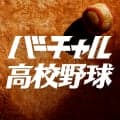J&J Business Development Corp. established the project called“Bank of Craft”, which promotes the use of traditional …
J&J Business Development Corp. established the project called “Bank of Craft”, which promotes the use of traditional crafts in the regional ecosystem by fusing creative works, art, and digital technology to develop tourism resources, solve regional issues, and create a new primary resource of revenue in craft production areas, rather than just maintaining the value of the craft as a product.
As the first edition of this project, Kyoto Nishijin Textile, FINEPLAY, 430(Four-Thirty),and CURRENT have joined this collaboration to create premium skateboards and kendamas, which are now on sale.
In this article, we interviewed Kentaro Yasuda, the CEO of Yasuda Corporation., Soichiro Imagawa, the president of Kiyata Imagawa Orimono Co., and Sakio Ohba, the president of Kyoto Nishijin Oba. They are in charge of the design production of this project and also are the members of N180 (Nishijin One Eighty), a group that promotes new culture in the Nishijin.
We are honored to have central figures of this project that crosses over the two different cultures between Japan’s world-class traditional culture and street culture which originated from the West. We asked them about the historical background of the Nishijin Textile, the challenges they face, and their thoughts behind the unique collaboration of “Urban Sports x Nishijin Textile”.
Kentaro Yasuda (Hereinafter: Yasuda)
Soichiro Imagawa (Hereinafter: Imagawa)
Sakio Ohba (Hereinafter: Ohba)
Historical background of how “diversity” became a characteristic of Nishijin Textile

From the left is Kentaro Yasuda, Soichiro Imagawa, Sakio Ohba
The history of textiles in Kyoto began about 1,200 years ago when the first people arrived in Japan. So this traditional craft has a very long history, including the period when Kyoto was the capital of Japan.
Since Nishijin textile craftsmen in Kyoto have dealt with the detailed needs of the wealthy class such as the so-called noble family and royalty, this industry has built a system to tailor to detailed requests and needs from customers.

Soichiro Imagawa, the president of Kiyata Imagawa Orimono Co.
This system is enabled by “division of work”, which means that the work is allocated to specialists in each process. This “division of work” is quite characteristic of Nishijin textiles craftsmanship and its own “diversity”, Soichiro Imagawa said.
Imagawa: Back in the days when all Japanese wore kimonos, kimonos were not treated as special clothing but had various uses ranging from everyday wear to ceremonial wear.Nishijin textile manufacturers made obis and kimonos to meet those needs, so it was not a matter of them “preserving some tradition” but rather creating more products that fit the background of the times. In this process, the “division of work” was developed to make it more efficient as an industry, and specialists in each process came out and expanded the “diversity” of products to be made. This is a historical backdrop that the Nishijin Textile industry has travelled.
Challenges facing the “Modern” Nishijin Textile

Over time, however, the Nishijin textile industry has faced many challenges. One of the most serious problems is a lack of successors.
In the division of work that has supported the diversity of the Nishijin textile, even if only one specialist in each process ceased to exist, the entire process would come to a standstill.
So Nishijin textile manufacturers are trying various measures, such as training successors from younger generations among themselves. However, the current problem is that they are unable to keep up with the speed at which the scale of their business is shrinking.
To solve these problems, an organization called “N180” was launched to promote a new culture of Nishijin textile.

Sakio Ohba, the president of Kyoto Nishijin Ohba.
Mr. Sakio Ohba, the president of Kyoto Nishijin Ohba, the only textile manufacturer in Japan that uses “Tsuzura-yarn,” said the following.
Ohba: In the face of such problems, we started an organization called “N180”. The reason why we chose the word “180” in the name of this group is that it means to turn things upside down so we want to change this current situation under the name. We also have a YouTube channel and are working on letting fans know about the current situation that the kimono production area is facing and the appeal of obis and kimonos from the perspective of their manufacturers.
The feelings behind “Nishijin Textile x Urban Sports”

The actual design of Kendama and Skateboard deck
The activities of N180 were the catalyst for this “Bank of Craft” project. Mr. Imagawa and the members of N180 thought it was about time to create a new product so made a decision like “We have to get on board!”. And he added,
Imagawa: We simply like interesting and new things (laughs). And we joined this project because it was completely linked to what we have wanted so we had no choice but to get on board.
While such kimonos have a strong top-down cultural element, on the other hand, I think street culture is truly a bottom-up culture so we were very excited to see how Nishijin textiles could be introduced and accepted in a completely different world.
New charm of Nishijin textile is now introduced by new approaches

In everyday production, it is difficult to balance the two elements of “art” and “product” when thinking about its design within the canvas of obi or kimono.
However, “It was stimulating for us to have an offer with this kind of design because it allowed me to challenge myself from a different angle,” said Mr. Kentaro Yasuda, the president of Yasuda Co.
And he also added with his impression of this unique collaboration as follows.
Yasuda: Kendama is originally a Japanese game but recently has become a worldwide sport, and I think it is very interesting that kendama with Nishijin patterns is spreading to the world. On the contrary, skateboarding is a culture that originated in the U.S., and I think it is very cool to see the precise patterns of Nishijin textile on the back of skateboard decks when skaters perform various tricks.

Kentaro Yasuda, the CEO of Yasuda Corporation.
Finally, Mr. Ohba shared his impressions of the products and his vision for the future.
Ohba: While we design kimonos and obis, it was a fresh surprise to see the different points of view that the designers in other genres focus on when we turn our design into products. Nishijin textiles have a long history and have produced many designs in the past, but I have a hope that other designers and different points of view will show us new charms so I would like to see more new collaborations in the future!

Since the Nishijin textile production area has various historical backgrounds, this kind of new contemporary initiative will probably bring a new wind to the traditional craft production areas throughout Japan.
We will continue to stay tuned with the development of “Bank of Craft” project and new expressions that come with traditional crafts in the future.
These products can be purchased online from the FINEPLAY EC site so everyone including skaters, kendama players, and collectors in Japan can enjoy this unique collaboration of traditional craft design “Kyoto’s Nishijin-ori” and urban sports. Please check them out.
Product Information

Traditional Craft Designed Skateboard & Kendama Full Package
*Only 10 sets available
This full package includes the collaboration skateboard with “Nishijin textile (Kyoto)” and the skateboarding media “CURRENT”, and the collaboration kendama with “Nishijin textile (Kyoto)” and “430 (Four-Thirty)” known as the leader in Japanese kendama culture.
Price: 35,000 yen (38,500 yen – tax included)
<Traditional craft designed skateboard and Kendama Full Package>
-Traditional craft designed kendama “Wind God and Thunder God”
-Traditional craft designed kendama “Noe Tanzaku”
-Traditional craft designed skateboard “Keijuhakuohbun”
<Special Gift for those who purchase the full package>
An original NFT (Until March 31, 2024) , a Bank of Craft limited edition not-for-sale T-shirt and an original strap will be given as a special gift to those who purchase the full package!
*The Bank of Craft limited edition T-shirt is only available in size L.

【Bank of Craft×Nishijin textile×430】
Traditional craft designed kendama “Wind God and Thunder God”
This kendama is made in collaboration with Nishijin textile (Kyoto), a traditional Japanese craft design, and “430 (Four-Thirty)”, the leader of Japanese kendama culture. The Sarado is enlarged compared to the regular one so that both beginners and experts can handle it, and the size of the ball hole is also adjusted to larger size specifications. The soft and splendid beech material used for the product allows the users to enjoy how the material ages by the texture and visual appearance. This product is also packaged in a special paulownia box so you can enjoy a luxurious look as an interior accessory by keeping it in the box.
Price: 12,700 yen (13,970 yen – tax included)
※This price is set per item.

【Bank of Craft×Nishijin textile×430】
Traditional craft designed kendama “Noe Tanzaku”
This kendama is made in collaboration with Nishijin textile (Kyoto), a traditional Japanese craft design, and “430 (Four-Thirty)”, the leader of Japanese kendama culture. The Sarado is enlarged compared to the regular one so that both beginners and experts can handle it, and the size of the ball hole is also adjusted to larger size specifications. The soft and splendid beech material used for the product allows the users to enjoy how the material ages by the texture and visual appearance. This product is also packaged in a special paulownia box so you can enjoy a luxurious look as an interior accessory by keeping it in the box.
Price: 12,700 yen (13,970 yen – tax included)
※This price is set per item.

【Bank of Craft×Nishijin textile×CURRENT】
Traditional craft designed skateboard “Keijuhakuohbun”
This skateboard is created by Bank of Craft, a project that aims to reconstruct the value of traditional crafts and arts, and to inherit and develop traditional crafts by taking advantage of its techniques and shaping them to suit modern life through some development and crossover under their mission of building a new business model of traditional crafts and arts,This product is made in collaboration with Nishijin textile (Kyoto), a traditional Japanese craft design and skateboarding media “CURRENT”.
Price:15,000 yen (16,500 yen – tax included)
The post Bringing a new wind to the culture of Nishijin textile! "Bank of Craft” introduces a new charm of Nishijin textile fused with “Street culture”. first appeared on FINEPLAY.











































































